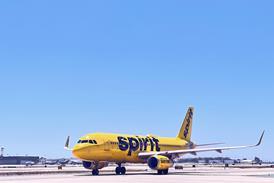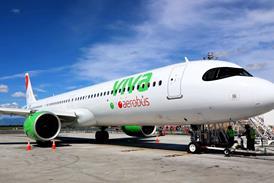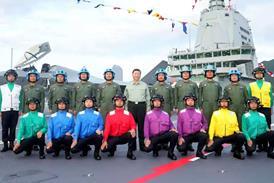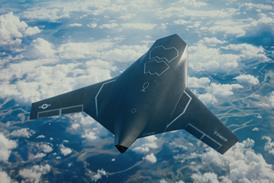The US Marine Corps (USMC) has plans for at least two more test flights with the Kratos XQ-58A Valkyrie uncrewed jet, which the service is evaluating for a potential operational role.
As noted in the latest USMC force design update released in late October, the corps has already conducted four Valkyrie test flights, including pairing the autonomous jet with Lockheed Martin F-35B stealth fighters in 2024.
Those drills focused on establishing Link 16 data communications between the XQ-58A and F-35s, with the unmanned Valkyrie acting as a forward-deployed sensing platform providing threat data back to the manned fighters for evaluation and targeting.
Now, the Marine Corps says it will execute two new test events before year-end to continue assessing the potential of so-called manned-unmanned teaming for “electronic warfare, autonomous missions and survivability” applications.
The ultimate goal is to expand the “reach, survivability and effectiveness” of combat aviation, according to the service.
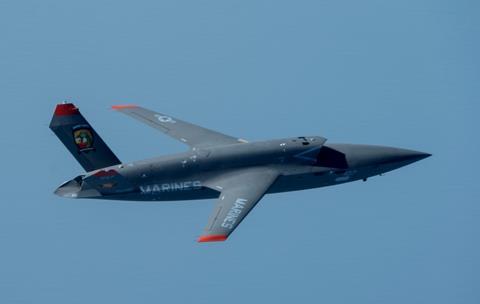
Notably, the USMC force design update formally refers to the XQ-58A as a Collaborative Combat Aircraft (CCA) – the same designation given by the US Air Force (USAF) to its next-generation uncrewed tactical fighters currently under development.
Though the USAF conducted its own test flights with the XQ-58A, the service ultimately opted to develop new CCA prototypes – the General Atomics Aeronautical Systems YFQ-42A and the Anduril Industries YFQ-44A.
However, the air force has continued using the Kratos jet to test concepts for integrating CCAs with crewed fighters. Earlier this year it successfully demonstrated the ability of the Boeing F-15E and Lockheed F-16C to control a multi-ship flight of XQ-58As.
While the USAF is primarily looking at deploying its first generation of CCAs in an air-to-air role, the USMC looks to be more focused on air-to-ground applications, particularly the suppression of enemy air defences (SEAD).
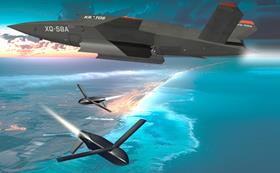
Currently, the US Navy’s Boeing EA-18G Growlers are the only pure-built electronic attack fighter in the US military inventory. The USAF uses a small contingent of specially equipped F-16CMs for that mission, which is a crucial –and dangerous – component of SEAD.
Shifting electronic attack to an uncrewed CCA platform like the XQ-58A could prove appealing for an expeditionary force like the Marine Corps, whose missions include establishing beachheads in hostile terrain via amphibious or air assault.
Should the USMC opt to field the XQ-58A operationally, it would likely receive an “FQ” designation as the air force has indicated its future CCAs will bear.
Kratos chief executive Eric DeMarco has previously said the company can have 15 aircraft ready for delivery immediately upon receiving a procurement contract.
With funding from the USAF and USMC test efforts, the company has jump-started production on an initial batch of 24 Valkyrie jets in anticipation of future demand.
Long-lead items are also being purchased to support production of a second tranche of 24 aircraft.
“Kratos made the decision to make the investment and begin serial production of 24 Valkyries ahead of contract award, so that Kratos would be first to market and that the potential customers could come to the factory, see their aircraft being built, see the actual cost data for the aircraft, see their aircraft fly, and we believe based on what we expect to occur that this was the correct business decision,” DeMarco said in August.
The company is also aggressively pursuing opportunities overseas, most notably in Germany, where Kratos announced a partnership with Airbus Defence & Space in July to offer an XQ-58 derivative to the German air force, with a targeted fielding date of 2029.
DeMarco has also previously stated that Kratos is pursuing a Valkyrie sale with two more unnamed customers, for which he has described the company as being in a “sole source position”.
Although much remains to be determined, the Kratos CEO has suggested a potential sale price of around $10 million per aircraft, likely to be a highly competitive number for the CCA market, which places a premium on affordability and mass.
Kratos is working on several new features to the rocket-booster launched XQ-58A, including internally stowed landing gear.
Northrop Grumman also recently released a rendering of its new Lumberjack one-way attack munition being deployed by a Valkyrie via internal weapons bays.

